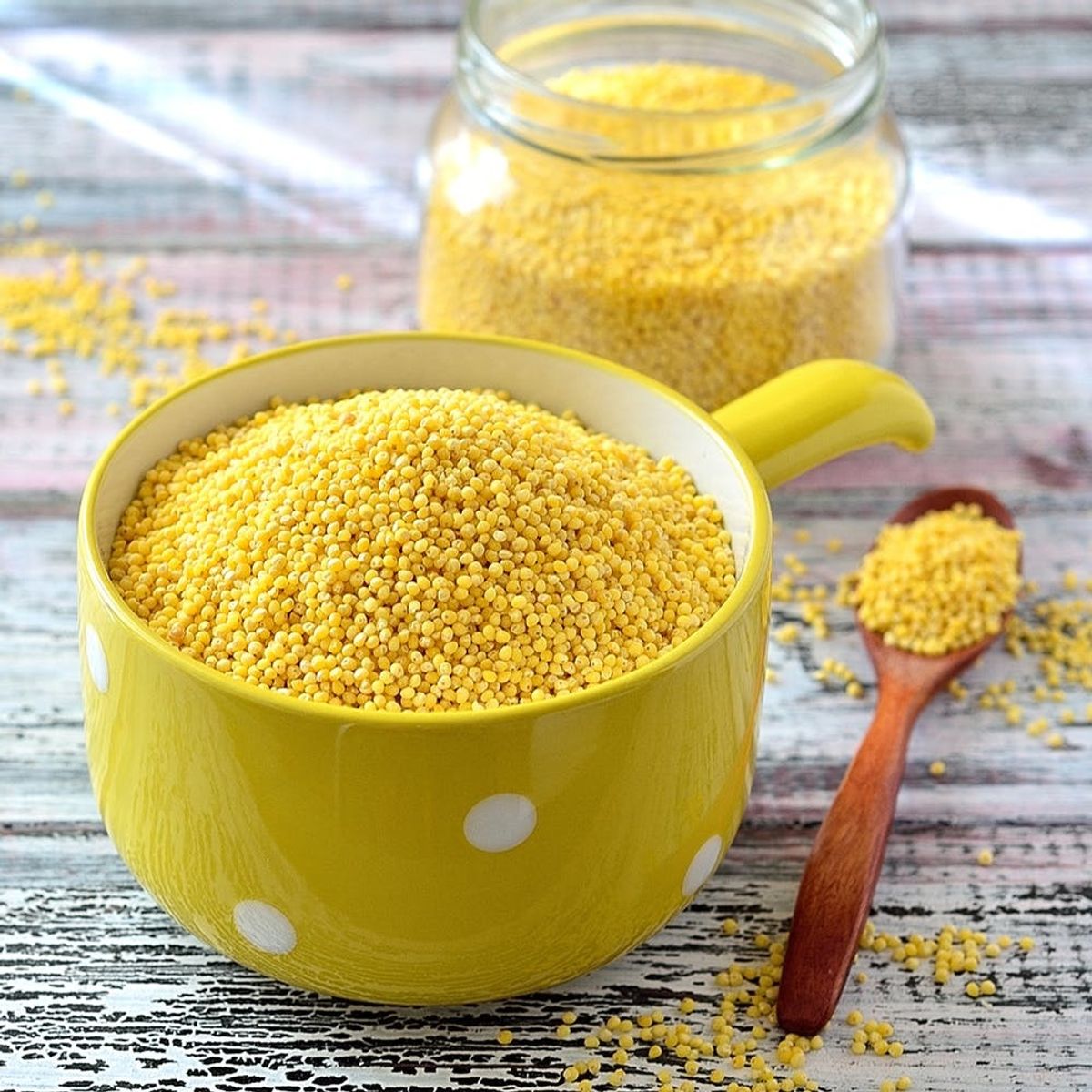Proof whole grains aren’t just a load of carbs.
How Much Protein Is Actually in Those Ancient Grains You Love?

If you’re on the grain train, then you’re probably very familiar with quinoa and its high protein content: roughly eight grams of it per one cooked cup, to be precise. (Okay, technically quinoa is a psuedograin, like a seed, but we cook and consume it like a grain). But it’s definitely not the only grain out there that is loaded with protein. In fact, there are several options that contain even more protein than quinoa. We took a look at the USDA Food Composition Database to find the protein content in other whole grains and psuedograins, so you can load up on that micronutrient with each bite.
Millet

6 Grams of Protein (1 Cup Cooked): This incredibly nutritious grain is used widely in third world countries but sadly spent many years in the Western world relegated to birdseed status before being rediscovered by chefs who had renewed interest in ancient grains. As a result of the revival, millet has gained significant popularity in the mainstream due to its mildly sweet and nutty flavor. Its fluffy texture makes it versatile and can be used in everything from pilafs to cookies. (Photo via Tatyana_Malova / Getty)
Einkorn

18 Grams of Protein (1 Cup Cooked): Einkorn is the world’s most ancient wheat and the only wheat that’s never been hybridized. Einkorn means “one kernel” in German, and the name refers to the fact that each spikelet contains only one grain. (Photo via Quanthem / Getty)
Emmer

12 Grams of Protein (1 Cup Cooked): Also known as farro, emmer along with einkorn is believed to be the parent plants of all Durum wheats. Interestingly, wild emmer was actually a lost species until it was rediscovered in 1906 growing wild in Israel by the Sea of Galilee. (Photo via Karisssa / Getty)
Buckwheat Groats

~6 Grams of Protein (1 Cup Cooked): Although it has wheat in the name, buckwheat is one of the whole grains that many people living with Celiac disease can tolerate. It is also one of the best grain-based sources of magnesium, which does everything from relieving PMS symptoms to improve nerve functioning. Good thing it makes delicious pancakes. (Photo via Ervins Strauhmanis / Flickr)
Rye Berries

12 Grams of Protein (1 Cup Cooked):Rye has four times more fiber than standard whole wheat and provides you with nearly 50 percent of your daily recommended amount of iron. That is a whole lot of good-for-you in each bite. Be vigilant though. A lot of rye is mixed with refined flours, so be persistent and look for “whole rye” topping the ingredients list to reap the healthy benefits. (Photo via Savany / Getty)
Spelt

~11 Grams of Protein (1 Cup Cooked): Spelt is a variety of wheat that has been cultivated since approximately 5000 BCE. The result is a chewy grain that is great to eat whole or milled into flour for baking. Be mindful though; spelt does contain gluten, but some people with mild gluten issues can tolerate it better than regular wheat. (via limpido / Getty)
Teff

~10 Grams of Protein (1 Cup Cooked): Teff is a fine grain, about the size of a poppy seed, that comes from Africa in a variety of colors. This grain is slightly sweet and nutty flavor… not to mention it packs a serious nutritional punch with its balance of amino acids, protein, calcium, and iron. (Photo via Karisssa / Getty)
How do you like to cook with ancient grains? Share your favorite recipes with us @BritandCo.












